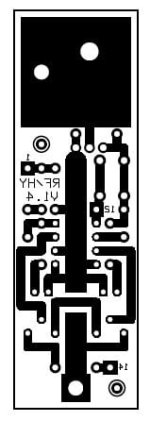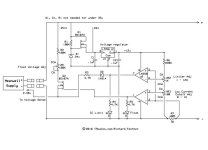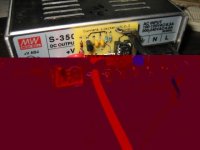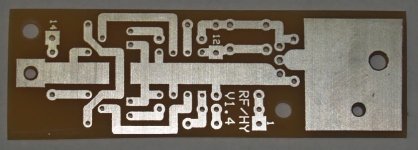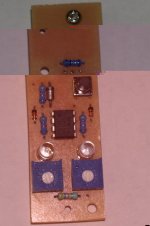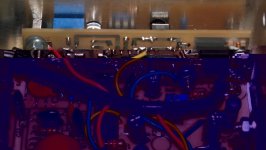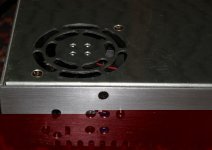heathyoung
100 kW
Thats a good idea, means setting is more obvious.
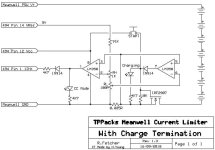
This board is 51mm X 43mm, and is designed to fit inside the meanwell power supply top cover with only the LED's and the start button poking through. The trimpots are accessible through holes in the case as well. The Mosfet is heatsinked to the case, and the shunt is an SMD version, so the heat will be distributed through the tracks on the PCB as well. Oh and I fixed the issues with the wrong tracks
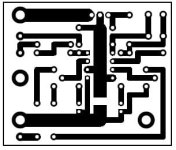
Here is the component placement: Everything bar the shunt is mounted as usual, the mosfet is bent so its back mounts to the underside of the meanwell cover (with a silicon insulator etc). It is screwed to the cover as well for secure mounting.
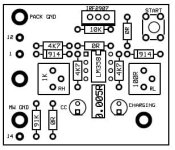
And the parts list is pretty straightforward.
1 X BOURNS - 3386P-1-101LF - TRIMMER, 100R
1 X BOURNS - 3386P-1-102LF - TRIMMER, 1K
1 X MULTICOMP - MC32830 - Tactile Switch
1 X WELWYN - OARS1 - R050FI - RESISTOR, SMD 1% 0R050
3 X 4K7 250mW Resistor
3 X 0R 250mW Resistor
1 X 10K 250mW Resistor
1 X 91K 250mW Resistor
1 X LM358 Dual Opamp
1 X Red High Brightness 5mm LED
1 X Green High Brightness 5mm LED
2 X 1N914 Diodes
1 X IRF2907 75V75A Mosfet
I'll knock up some boards this afternoon or next week if I get a chance... I need something to charge up 52V worth of konions

This board is 51mm X 43mm, and is designed to fit inside the meanwell power supply top cover with only the LED's and the start button poking through. The trimpots are accessible through holes in the case as well. The Mosfet is heatsinked to the case, and the shunt is an SMD version, so the heat will be distributed through the tracks on the PCB as well. Oh and I fixed the issues with the wrong tracks

Here is the component placement: Everything bar the shunt is mounted as usual, the mosfet is bent so its back mounts to the underside of the meanwell cover (with a silicon insulator etc). It is screwed to the cover as well for secure mounting.

And the parts list is pretty straightforward.
1 X BOURNS - 3386P-1-101LF - TRIMMER, 100R
1 X BOURNS - 3386P-1-102LF - TRIMMER, 1K
1 X MULTICOMP - MC32830 - Tactile Switch
1 X WELWYN - OARS1 - R050FI - RESISTOR, SMD 1% 0R050
3 X 4K7 250mW Resistor
3 X 0R 250mW Resistor
1 X 10K 250mW Resistor
1 X 91K 250mW Resistor
1 X LM358 Dual Opamp
1 X Red High Brightness 5mm LED
1 X Green High Brightness 5mm LED
2 X 1N914 Diodes
1 X IRF2907 75V75A Mosfet
I'll knock up some boards this afternoon or next week if I get a chance... I need something to charge up 52V worth of konions


